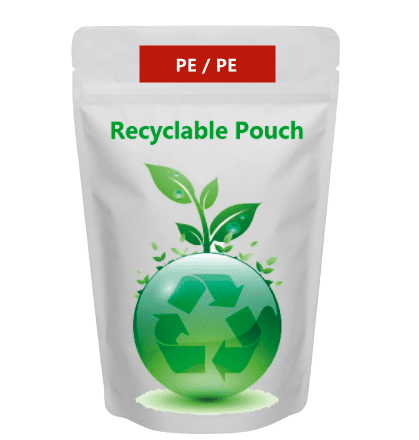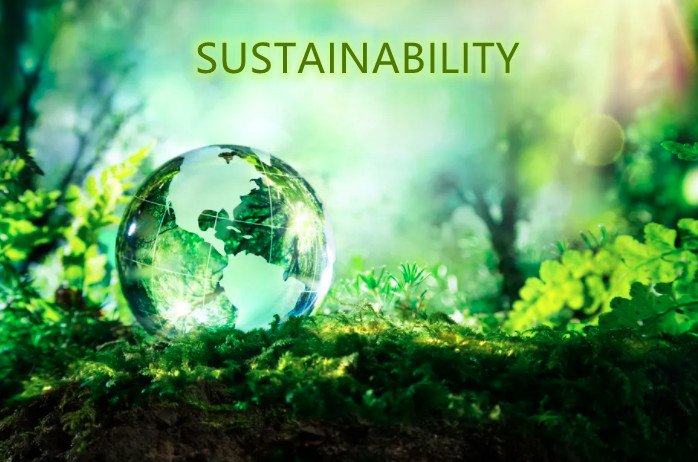What Are The Differences Between PCR Pouches and Recyclable Pouches?
Currently more and more companies focus on sustainable packaging. There are 3 major sustainable packaging now:
PCR (Post Consumer Recycled) Pouches
Compostable Pouches
All above 3 are very good for sustainable flexible packaging development. It is easy to understand what compostable packaging is, but there are many people still confused about PCR Pouches and Recyclable Pouches.
In this article, we will give an ultimate guide on the differences between PCR Pouches and Recyclable Pouches.
It’s an in-depth article that takes 20 minutes to read.
Navigation, click to jump to the section you want to read
What Are The Differences Between PCR Pouches and Recyclable Pouches?
1) What is PCR Pouches?
Post-consumer recycled pouches are laminated flexible packaging pouches that are made from recycled materials collected from consumers after they have used and disposed of products. These pouches are part of the broader sustainability and environmental conservation efforts aimed at reducing the use of virgin materials and minimizing waste. Currently there 2 main types of PCR Pouches: PCR PE Pouches and PCR PP Pouches.
Here's how the process generally works:
- Material Collection: After consumers use and discard products, materials like plastic pouches, plastic bottle, plastic rigid products are collected through recycling programs or waste management systems. As you can see the REDcycle in Australia, and How2Recycle in USA are with the same function. Of course the trash companies are doing the same.
- Material Sorting and Cleaning: Collected materials are sorted to separate different types of plastics and remove contaminants. The materials are thoroughly cleaned to ensure they are suitable for recycling. Even though we will put instruction of recycled tin on different materials such as PP or PE; but still we will need to sort it cause there are always mistakes. When there is different materials on the recycling facility, then the recycling process will become difficult and might be impossible. So we will make sure material are in the same recycling category.
- Recycling Processing: The cleaned materials are then processed, often melted down, and formed into pellets or granules. This recycled plastic material is known as “post-consumer recycled” (PCR) material. It is now the same function of the virgin resin, but this is post-consumer recycled PCR resin. For colored PCR material, normally we will make it black, and it is better to use for single layer bags. But for white color material, normally we will recycled it separately and make it white PCR material. This can be used to make laminated packaging ( laminated pouches.)
- PCR Pouches Manufacturing: Manufacturers use these PCR materials to produce new products, such as pouches for packaging. Normally we will use good quality white color PCR materials, we will first blow it to the film, then laminated to other film, then convert to pouch. It is even better if we laminated to the same material, so the PCR pouches can be recyclable pouch too after use. Such as PCR PP Pouches, PCR PE Pouches.
Post-consumer recycled pouches offer several environmental benefits:
- Reduction of Waste: By using recycled materials, these pouches help divert plastic waste from landfills and oceans. Any of the products from PCR materials instead of virgin materials will definitely use less resources from the nature.
- Energy Savings: Recycling plastic requires less energy compared to producing virgin plastic, which involves extracting and refining raw materials. As we know, most of the film materials are from oil. There is a complicated process to get the oil from Ocean or land, and it is also complicated to make it as resin. But for PCR materials, we will just need to collect, sort, clean and recycling it. This is much easier.
- Resource Conservation: Using recycled materials conserves natural resources like oil, which is a primary component of many plastics. Actually for 100% PCR products, we don’t need to use any natural resources.
- Carbon Footprint Reduction: The energy savings and reduced reliance on virgin materials can result in lower carbon dioxide emissions. This is so important for sustainable economy. Especially where there is guide lines and restriction on carbon emission for different countries in the world.
- Consumer Awareness: Companies that use post-consumer recycled materials demonstrate their commitment to sustainability, which can positively influence consumer perception and purchasing decisions. And it is also to remind our customers that there is PCR pouches, and sustainable packaging to help a better future world.
It’s worth noting that the term “post-consumer recycled pouches” evolve over time as new materials and technologies are developed to create more sustainable packaging solutions. With the help of packaging companies, environmental organizations, industry resources and our public populations we will sure use more sustainable packaging in our daily activities.

2) What is Recyclable Pouches?
Recyclable pouches are laminated flexible packaging pouches that are designed to be collected, processed, and reused in the production of new products, including more packaging materials. The goal of recyclable pouches is to create packaging that has a reduced impact on the environment by promoting circular economy principles and minimizing waste. Currently there are 2 main recyclable pouches: Mono-material Recyclable PE Pouches and Mono-material Recyclable PP Pouches.
Here's how recyclable pouches typically work:
- Material Selection: Recyclable pouches are made from materials that are widely accepted and processed by recycling facilities. These materials can include various types of plastics, paper, and other materials that can be easily sorted and processed. But as we know, We will need mono-materials to make it recyclable, and we need lamination to make it pouches. So Paper is not possible to make recyclable pouches cause Paper material only cannot do lamination. Currently the main materials for recyclable pouches are PP and PE. Especially the mono-material PE pouches are widely use today for recyclable pouches. and the most important function is the PE pouches can be with high barrier function which is the most important characteristics for laminated packaging.
- Design for Recycling: Packaging designers and manufacturers take into consideration the recyclability of the materials used and the overall design of the pouch. The design should enable easy separation of different materials, such as removing labels or components that might hinder recycling. But the easiest way is to use mono material, so you don’t need to sort it. We just need to make sure the packaging used is clean and without any extra labels. Orelse we will need to clean it or take off the label first.
- Collection and Sorting: After consumers use and discard products, the pouches are collected through recycling programs. They are then sorted at recycling facilities to separate different types of materials and remove contaminants. Nowadays where there is How2Recycle tin in the super market stores for waste collection will make the collection process easier. and the sorting with just couple materials will be easier, especially it is always mono-material so we don’t need to take the materials apart which is the biggest challenge.
- Processing: The collected pouches are processed to break down the materials into reusable forms. For plastic pouches, this often involves melting the plastic down and forming it into pellets or granules that can be used to create new products. Normally the colored materials will recycle together and make it black color resin. While white color will recycle to white resin.
- Manufacturing of New Products: The recycled materials are then used to manufacture new products, including pouches and other packaging materials. These materials replace the need for virgin materials, reducing the demand for raw resources. The black PCR material can be used to make single layer bags such as courier bags or plastic chain, etc. While the white PCR resin can be used to make white film, and it is also possible as the film materials to make laminated pouches.
Recyclable pouches offer several environmental benefits:
- Waste Reduction: By designing packaging that can be recycled, less waste ends up in landfills or as litter. The recyclable pouches can be collected again and make recycled products.
- Resource Conservation: Recycled materials reduce the need for extracting and processing virgin materials, conserving natural resources. Any of the design recyclable material will eventually consume less materials from the nature.
- Energy Savings: Recycling often requires less energy than producing materials from scratch. When we collect, sort, clean and recycle the material. It will definitely use less energy than to get the oil from the land/ocean and make it as resin.
- Emission Reduction: Using recycled materials can lead to lower carbon emissions and environmental pollution compared to using new materials.
It’s important to note that the recyclability of a pouch depends not only on the material used but also on the availability of recycling infrastructure in a specific region. Different recycling facilities might have varying capabilities and limitations in terms of what materials they can process. Therefore, while a pouch might be labeled as “recyclable,” the extent to which it can be recycled depends on local recycling systems and practices. Which also means the recycling capability vary from different countries. That’s why we follow the direction that the easiest way all over the world: mono material pouches so it can be recyclable for all the facilities.

3) What Are The Differences Between PCR Pouches and Recyclable Pouches?
PCR (Post-Consumer Recycled) Pouches: Pouches with PCR materials.
Recyclable Pouches: Pouches can be recycled after use.
Here are the most common Pouches film structure:
PCR Pouches:
PE / PCR PE
PP / PCR PP
Recyclable Pouches:
MDOPE / PE
Barrier MDOPE / PE
PE / EVOH PE
MDOPE / PCR PE
Here are 6 things you need to know about PCR Pouches and Recyclable Pouches:
- Both PCR Pouches and Recyclable Pouches are sustainable laminated flexible packaging.
- Currently main materials for PCR Pouches and Recyclable Pouches are PE and PP
- PCR Pouches can be with the PCR materials from Recyclable Pouches.
- PCR Pouches with mono-material lamination can also be Recyclable Pouches.
- Both PCR Pouches and Recyclable Pouches can be with high barrier
- Both PCR Pouches and Recyclable Pouches can make all kinds of bags as the conventional film materials ( not recyclable material).

What Longdapac Can Help?
Longdapac is the leading flexible packaging manufacturer from China since 1991. We focus on sustainable flexible packaging as you can see below:
Longdapac is the first high barrier MDO-PE film manufacturer in China and it is the first high barrier mono-material PE pouch manufacturer in China. Most widely use film structures as below:
MDO-PE / PE
High barrier MDO-PE / PE
PE / EVOH PE
PE / PCR PE
With this materials, we can make recyclable stand pouch pouch, gusset bag, recyclable flat bottom pouch, flat pouch, etc.
Longdapac recyclable high barrier mono-material PE pouches can meet the recyclability of:
- CE FLEX in EU
- How2Recycle in USA
- SOFT PLASTIC in New Zealand
- REDcycle in Australia
Longdapac is a BRC and ISO certified factory with annual capacity of more than 25,000 tons.
And we are also a leading company of hevy duty PE open mouth bags and PE valve bags from 10kg, 25kg, to 70kg.
As leading flexible packaging companies in China, basically Longdapac can satisfy all your recyclable flexible packaging needs, both standard and high barrier.
FOR MORE INFORMATION ABOUT HIGH BARRIER MDO-PE FILM AND 100% RECYCLABLE HIGH BARRIER MONO-MATERIAL PE POUCHES, PLEASE CONTACT OUR TEAM TODAY.
This article is written by Longdapac.
